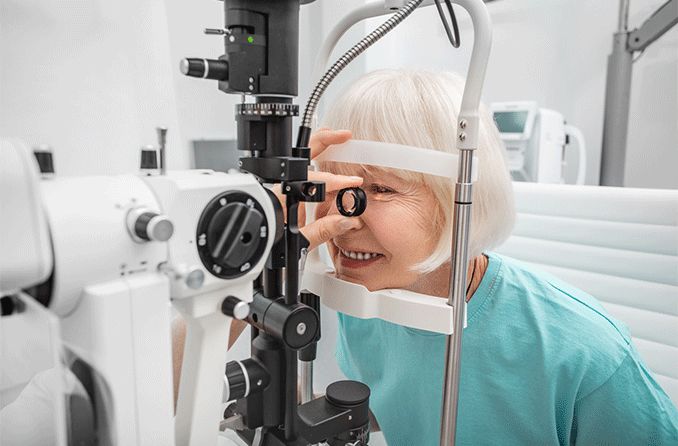What is gonioscopy?

A gonioscopy is a painless eye exam administered by an ophthalmologist to observe the anterior chamber angle (or the drainage angle) — where the iris meets the cornea — and evaluate the drainage of the eye’s fluid (aqueous humor). This angle cannot be seen through a basic visual examination.
The tools utilized in a gonioscopy enable the eye doctor to gain insight into the functions (or dysfunctions) of the eye’s drainage system, which is critical for the diagnosis of open-angle glaucoma, closed-angle glaucoma and angle-recession glaucoma. The exam may also be used to evaluate conditions such as tumors and eye trauma.
Your eye doctor may recommend gonioscopy depending on your age and your risk for developing glaucoma.
Why is gonioscopy important?
The eye constantly produces and drains a fluid called aqueous humor, which delivers nutrients to the eye, among other important functions. A healthy balance between production and drainage of this fluid is crucial to maintaining stable intraocular pressure (IOP). If your IOP gets too high, it can cause optic nerve damage, otherwise known as glaucoma.
Gonioscopy is performed to confirm that the drainage system is working properly, and it is essential in the process of diagnosing both open and closed-angle glaucoma. This exam can reveal if the drainage angle is blocked or too narrow for proper drainage.
While gonioscopy is useful in helping eye doctors detect glaucoma, it can also be helpful in evaluating and/or detecting conditions such as:
Tumors
Ophthalmologists use a gonioscopy grading system to identify specific problems within the drainage system of the eye and any other problems that may be present.
When should you have a gonioscopy exam?
Vision and health changes that begin to occur around age 40 put adults at greater risk for developing various eye conditions, including glaucoma. Gonioscopy may be recommended for adults at this age and beyond, particularly for those at greater risk of developing glaucoma.
For example, glaucoma can be inherited, so if you’re a glaucoma “suspect” due to your family’s medical history, your eye doctor may recommend a gonioscopy on a routine basis to monitor any indications of the condition developing.
Additionally, if certain related abnormalities are detected during a comprehensive eye exam, your eye doctor may want to follow up with a gonioscopy.
SEE RELATED: Can glaucoma be prevented?
What to expect during a gonioscopy
A gonioscopy is generally quick and painless.
First, your eyes will be numbed with special eye drops to ensure you do not feel any discomfort during the exam. Then your ophthalmologist will examine your eyes with a goniolens or gonioscope — a small device designed with mirrors along its interior and a lens at one end that rests over the cornea like a contact lens. When the lens is placed over the cornea, the interior mirrors allow your eye doctor to view the anterior angle of the eye.
Once the lens is situated on your eye, a beam of light is shined into the eye with the use of a slit lamp microscope. You may feel pressure on your lids or eyelashes during a gonioscopy, but the test should be otherwise painless.
See your eye doctor
While a gonioscopy may not be recommended for everyone, keeping up with regular eye exams can help avoid vision problems that may arise. For optimal vision health, schedule a comprehensive eye exam with your eye doctor every year.
What is gonioscopy? American Academy of Ophthalmology. May 2019.
Gonioscopy: What is it and why is it needed? Glaucoma Research Foundation. Accessed March 2021.
Examples of diagnosis. Gonioscopy.org. Accessed March 2021.
Glaucoma: What every patient should know. Johns Hopkins Medicine, Glaucoma Center for Excellence. 2011.
Page published on Wednesday, April 7, 2021
Medically reviewed on Saturday, August 28, 2021




